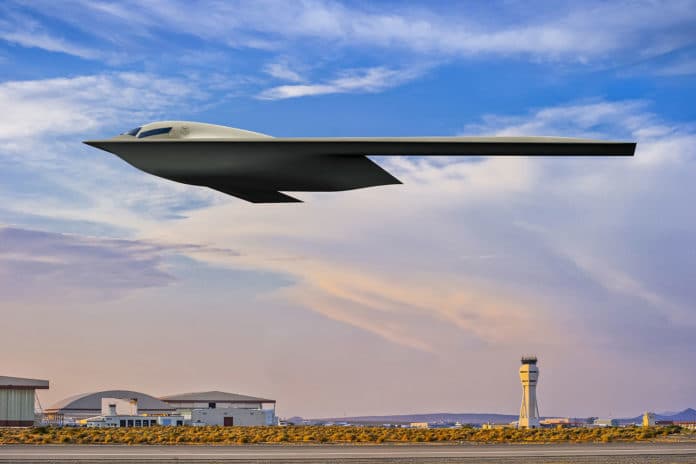The U.S. Air Force released a new artist rendering of its B-21 Raider heavy strategic nuclear bomber, along with a fact sheet providing further details of the warplane.
The new rendering highlights an updated version of the delta-winged stealth bomber with Edwards Air Force Base, California, as the backdrop. The 420th Flight Test Squadron based at Edwards AFB will plan, test, analyze and report on all flight and ground testing of the B-21 Raider.
B-21 Raider is being built by Northrop Grumman as part of the Air Force’s Long-Range Strike Bomber program (LRS-B) and will play a critical role in ensuring America’s enduring airpower capability. The B-21 Raider will be a dual-capable penetrating strike stealth bomber capable of delivering long-range conventional and nuclear missions. Designed to perform long-range conventional and nuclear missions and to operate in tomorrow’s high-end threat environment, the nuclear bomber will be a visible and flexible component of the nuclear triad.
From the illustration, it looks like the bomber retains the original airframe design shown in the first renderings. While there is little that can be learned about the aircraft from its rendering, the windscreen configuration is quite conspicuous. A narrow slanted window is seen on the left side in this artwork, apart from the main cockpit windows. The advantage of such a design is still unclear since it is likely to be below the pilot’s field of view.
Northrop Grumman has been developing the B-21 since 2015 to incrementally replace the B-1 Lancer and the B-2 Spirit bombers to form a two-bomber fleet of B-21s and modified B-52s. In 2017, the company completed the preliminary design of the aircraft, and in 2019 began assembling the first flight model.
The B-21 program is on track to deliver B-21s to the first operational base, Ellsworth AFB, South Dakota, in the mid-2020s.
“Nuclear modernization is a top priority for the Department of Defense and the Air Force, and B-21 is key to that plan,” said Randall Walden, Air Force Rapid Capabilities Office director. “The built-in feature of open systems architecture on the B-21 makes the bomber effective as the threat environment evolves. This aircraft design approach sets the nation on the right path to ensuring America’s enduring airpower capability.“
